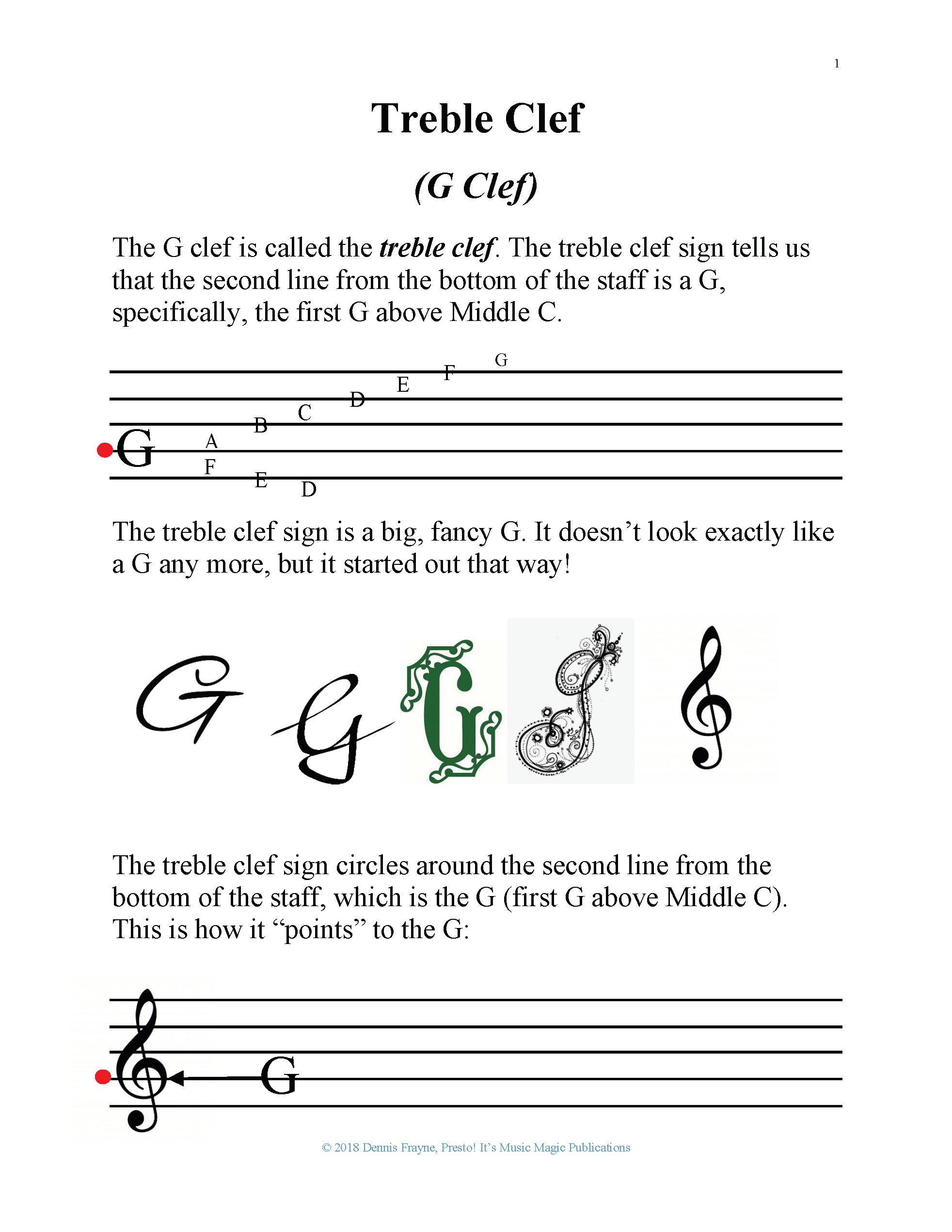There are a variety of approaches to teaching note reading. Probably any approach can be made to work by a skilled and devoted teacher and capable students. But with so many frustrated students and teachers that I encounter, and students that have studied for years but still cannot read notes on the staff, I think it’s important we all discover an approach that works well for us. I’m going to briefly mention a few of them, and then discuss my personal preferences.
There is the mnemonic approach. I don’t like this approach because the memorization is random and haphazard. There’s no inherent logic, there’s little or no student understanding of underlying structure, purpose, or intent, and there’s no recognition of useful patterns. Many students rely on the mnemonic for years and never truly memorize the grand staff notes or benefit from understanding their patterns.
There is the one-note-at-a-time approach. This week we learn C. We play songs with note C. Then next week we learn note D or G or some other note, one at a time, week after week. This approach is common in band and other instrumental ensemble methods, as well as some piano methods. It’s unnecessarily slow, tedious, (tortuous?), doesn’t take advantage of the powerful intelligence and capabilities of learners (that I see), and still doesn’t help students recognize patterns (except perhaps over a long period of time, eventually, when looking back and striving to make sense out of what was learned).
There are pattern-based approaches. These are the approaches I prefer. In many of the pattern-based approaches, students learn guide notes, and then learn patterns based off those guide notes. The most basic pattern is the music alphabet: A,B,C,D,E,F,G, going up, and G,F,E,D,C,B,A, going down. The clef signs point to one guide note each (treble clef = G, bass clef = F, alto clef = C, etc.). From these guide notes, students can quickly learn and memorize simple patterns: the note just above the guide note, the note just below the guide note; the scale going up and down, based on the music alphabet; intervals, triads, and more. Other guide notes, and other patterns, such as the pattern of C’s on the grand staff, can be useful and fun (for example, five C’s can be shown in an interesting mirror-image pattern that can be a useful memory aid for note reading).
When working with students, I use guide notes and then drill just a few notes related to the guide notes at a time. For example, treble clef G, A, and F; bass clef F, G, and E, Middle C, D, and B, etc. In a very short time students can learn 9 notes, and then 15, and sooner than you might expect, the whole grand staff including several ledger lines in each direction. If one note is memorized, then the note above and note below can be instantly recognized also – if students understand the pattern. It also help if students learn a little bit about the history and development of the staff, lines and spaces, pitch direction, clefs, etc., so they understand the underlying structure of the staff, its logic and its relationships.
Flash cards and online note identification apps can be useful, but not too early, because they are likely random and haphazard. If using flash cards or apps, limit the notes to just a few at a time, as discussed above, until those few notes are learned solid. Then add more notes, and build from there. Don’t teach just one note a week, but also, don’t simply jump into the whole deck and have students frustrated and guessing, or worse, trying to use the dreaded mnemonics crutch!
I like paper and pencil, along with other modes of learning (playing, gaming, speaking, audiating, online apps, visual aids, flash cards, and internal memory). I don’t skip paper and pencil; I think the work students do on paper helps to speed up and strengthen the memory.
If you’d like some FREE note identification worksheets that guide students through guide note and pattern-based learning and memorization process, visit the page linked below. There’s everything you need (and I am adding more worksheets regularly, including other topics)! You’re students will be reading the full grand staff in weeks or months, not years!
(Free means truly free. I do not ask for email nor collect any information. Simply download the pdf files and they are yours to print, photocopy, and use in your studio, school, or private teaching practice.)
https://www.prestoitsmusicmagicpublishing.com/music-note-reading
